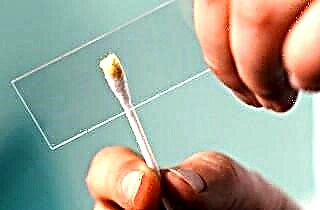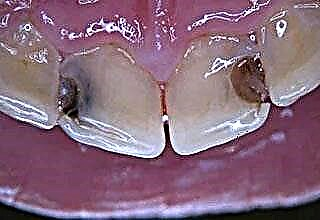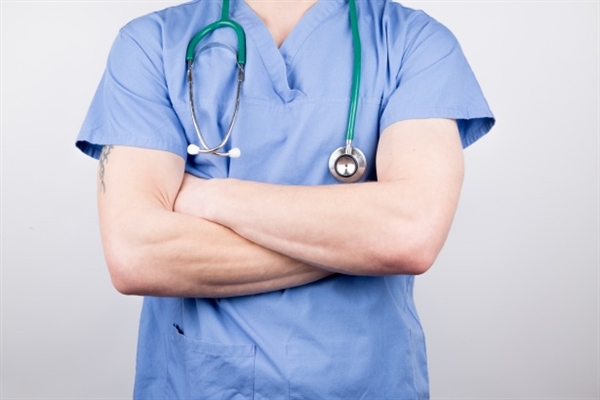Take a swab from the throat and nose for staphylococcus aureus in order to determine the causative agents of an infectious disease. Also, using a bacteriological study, the amount of pathogenic microflora, its sensitivity to certain types of medications are determined. The test results help the doctor choose the most appropriate therapy.
The need for research
 When staphylococcus aureus appears in the nose, it cannot be detected with the naked eye during a routine examination; only a microbiological study is needed to identify the problem. Patients with rhinitis, sinusitis, pharyngitis are referred for tests. Culture helps to study the ratio of microflora in the nose and throat.
When staphylococcus aureus appears in the nose, it cannot be detected with the naked eye during a routine examination; only a microbiological study is needed to identify the problem. Patients with rhinitis, sinusitis, pharyngitis are referred for tests. Culture helps to study the ratio of microflora in the nose and throat.
In addition to the presence of pathologies and complaints, a routine examination of this type is necessary for such categories of the population:
- pregnant women;
- medical workers;
- employees of educational institutions (schools, kindergartens);
- workers of places of public catering and food trade;
- patients who are prescribed surgery.
Prerequisites for diagnosis
 Suspicion of staphylococcus aureus can arise not only in the presence of diseases of the upper respiratory tract. In total, more than 30 species of this microorganism are known, which can affect absolutely all organs and organ systems. Not only ENT, but also a gastroenterologist, mammologist, infectious disease specialist, urologist, therapist can send a patient for analysis.
Suspicion of staphylococcus aureus can arise not only in the presence of diseases of the upper respiratory tract. In total, more than 30 species of this microorganism are known, which can affect absolutely all organs and organ systems. Not only ENT, but also a gastroenterologist, mammologist, infectious disease specialist, urologist, therapist can send a patient for analysis.
It is advisable to take a swab from the nose or throat if you suspect such violations:
- angina, which can be provoked by beta-hemolytic streptococcus;
- streptococcus aureus, causing the appearance of abscesses on the skin and mucous membranes;
- suspicion of diphtheria, meningococcal infection, or whooping cough;
- mononucleosis, laryngitis and abscesses that are located near the tonsils.
Preparatory procedures
Before taking the culture to detect staphylococcus, the patient is prescribed a complete cancellation of all antibacterial and antiseptic drugs. Treatment of the nose and throat with drugs is completed 2 weeks before the day of sampling. Otherwise, the result may be distorted. The problem of diagnosis is that during the time when any treatment is prohibited, bacteria can move to nearby healthy organs and infect them.
It is also recommended to drink as much liquid as possible 12 hours before visiting the laboratory, this will help to dilute the secretion secreted by the mucous membranes and facilitate the diagnosis.
When there are 8 hours left for the study, it is completely forbidden to eat food, water and other liquids, brush your teeth, and chew gum. As a rule, sowing is taken in the early morning, therefore preparation for the procedure does not provide inconvenience to the patient.
Material intake
 To find out the presence or absence of staphylococci in the flora, their type and type, you need to correctly take the contents of the nose and oropharynx. If the seeding is done from the nose, the patient is seated in a chair and his head is thrown back. Before the introduction of the instrument, mucus, if any, is removed from the passages, and it is treated with an alcohol solution (70%). After that, a sterile roller is inserted alternately into the right and left nostrils. It is important that the healthcare professional press it firmly against the tissue walls, this will help to collect the required amount of material.
To find out the presence or absence of staphylococci in the flora, their type and type, you need to correctly take the contents of the nose and oropharynx. If the seeding is done from the nose, the patient is seated in a chair and his head is thrown back. Before the introduction of the instrument, mucus, if any, is removed from the passages, and it is treated with an alcohol solution (70%). After that, a sterile roller is inserted alternately into the right and left nostrils. It is important that the healthcare professional press it firmly against the tissue walls, this will help to collect the required amount of material.
When the culture is taken from the pharynx, the patient's head is thrown back high. With a special spoon, they hold his tongue down so that you can get to the throat. With the help of a tool, mucus is taken.
After the material has been collected, it is placed together with a roller into sterile tubes. The containers contain a special solution that prevents the death of bacteria for 2 hours, it is in this time interval that all studies need to be carried out.
Under the microscope
By the appearance of bacteria, conclusions can be drawn about their number, morphological properties. To conduct a study, the material must be fixed in a glass slide and stained according to Gram. This will make it possible to understand which microorganisms are contained in the patient's mucus.
 When studying, you can get the following information:
When studying, you can get the following information:
- clusters of gram-positive cocci, resembling grape bunches in appearance, indicate the presence of staphylococcus;
- the presence of streptococcal infection is evidenced by positive staining and paired arrangement of cocci or their formation in the form of a chain;
- the presence of gram-negative cocci means the presence of Neisseria;
- rounded tips and light capsules of gram-negative bacteria are a sign of the presence of Klebsiella;
- Gram-negative bacilli such as Escherichia and Pseudomonas aeruginosa are small in size.
Sowing studies
Cultivation of bacteria in certain areas helps to identify bacteria of various kinds. Almost all microorganisms "love" places where ideal conditions for their survival and reproduction are created. This information makes it possible to identify the causative agent of the disease.
In order to grow a colony, you need to populate the smear in a certain nutrient medium and place it in a thermostat, where an environment favorable for reproduction is maintained. This is done only in a sterile box. The employee who performs the procedure must be dressed in overalls that will protect him from pathologically dangerous microorganisms.
 There is such a connection between the nutrient medium and bacteria:
There is such a connection between the nutrient medium and bacteria:
- saprophytes and pathogenic bacteria (pneumococcus, Staphylococcus aureus) live in blood agar;
- almost all microbes multiply in Saburo's environment, it is considered universal;
- staphylococci are cultivated in yellow salt agar;
- pathogens of purulent meningitis, gonococcus, hemophilic sticks rapidly multiply in chocolate agar;
- in the Endo environment, enterobacteria can be differentiated and diagnosed.
To study the material, a Petri dish is used - this is a special vessel in the form of a cylinder with a tight-fitting lid. Mucus taken from the nose or throat is rubbed onto its inner surface, and then gently scattered. The sowing stays in the thermostat for a day, after which it becomes clear which bacteria and in what quantity are present in the material.
For a more detailed study of microorganisms, they are placed in nutrient media, where they grow. A pure culture is much easier to study under a microscope, therefore, individual colonies are relocated.
What the results tell
 After a detailed study of all the features of pathogenic or opportunistic microflora, experts make a description of it. Conducting analyzes allows you to identify the genus and type of microorganism that has become the causative agent of the disease. The extract received from the laboratory contains the following information:
After a detailed study of all the features of pathogenic or opportunistic microflora, experts make a description of it. Conducting analyzes allows you to identify the genus and type of microorganism that has become the causative agent of the disease. The extract received from the laboratory contains the following information:
- type and genus of bacteria, written in Latin;
- designation of the pathogenicity of microflora;
- the number of bacterial cells.
If the result is positive, additional research is also done, this is especially important when a staphylococcal pathogen is identified.
Bacterial cells are tested for resistance to certain types of drugs and bacteriophages. This is necessary to prescribe the correct treatment, since many strains of pathogenic microorganisms have developed resistance to a wide range of antibiotics.
Research issues
In case of suspicion of an acute infection provoked by staphylococcus, it is necessary to take prompt measures to suppress it.If the patient does not start taking antibacterial drugs on time, then there is a risk of serious complications, such as:
 enterocolitis;
enterocolitis;- dysbiosis;
- purulent tonsillitis;
- mastitis;
- pneumonia;
- carbuncles, boils, eczema and other dermatitis;
- conjunctivitis;
- sepsis.
Since it is impossible to donate material for the detection of staphylococci while taking medications, a kind of vicious circle is formed: the doctor, not wanting to risk the patient's health, prescribes antibiotic therapy for him without conducting research, and the patient takes funds that may not have an effect on the pathogen at all. In order to avoid such a situation, you need to be very careful about your health and, if the slightest violations are found, go for examination.
In conclusion
It is necessary to conduct studies of mucus taken from the nose and throat to identify staphylococcus and other pathogenic and opportunistic microorganisms. A laboratory study will help to find out what exactly caused a deterioration in the patient's health, and it is also necessary to choose the most effective therapy. Monitor your health and undergo examinations on time.

 enterocolitis;
enterocolitis;

